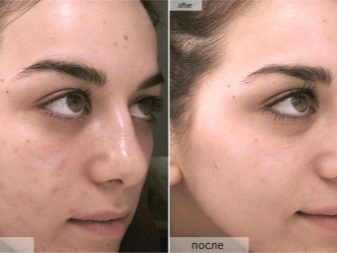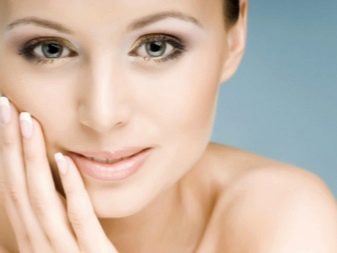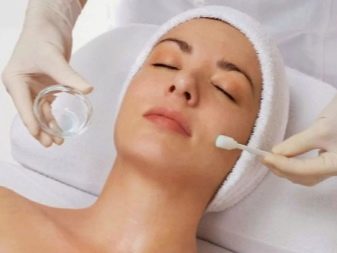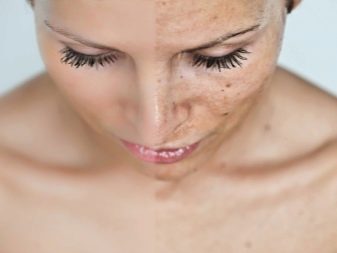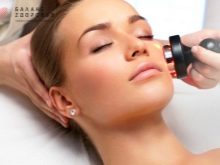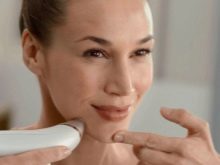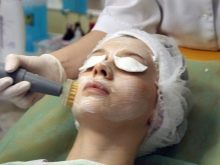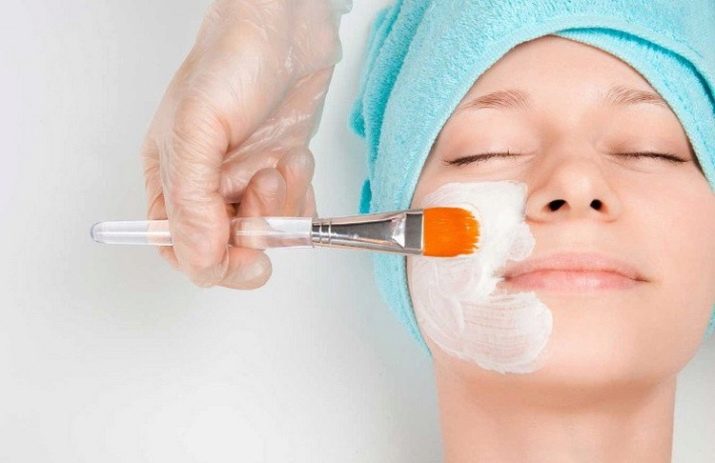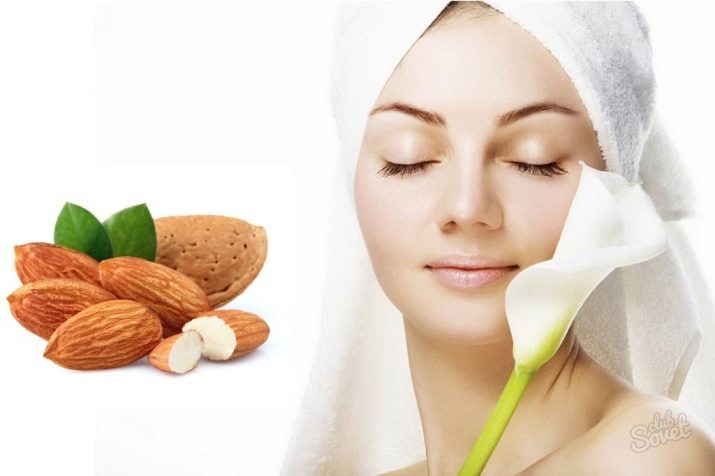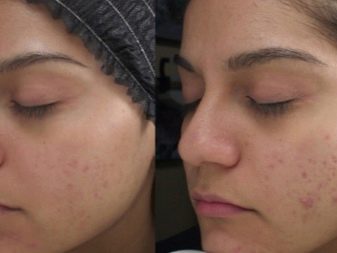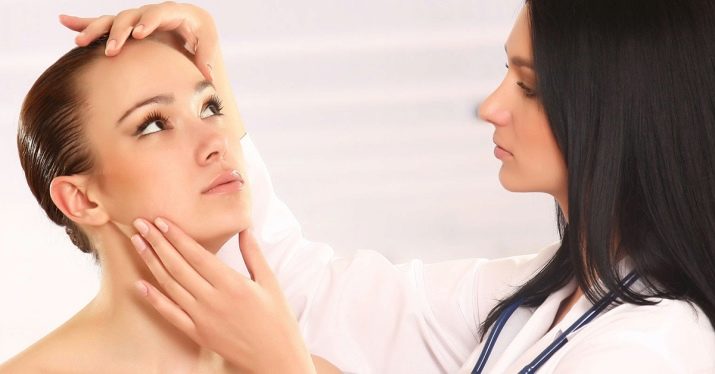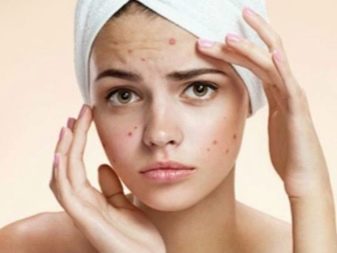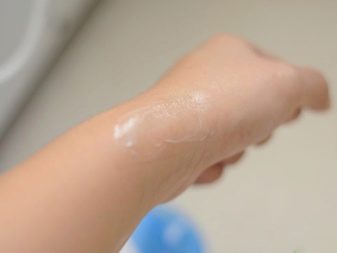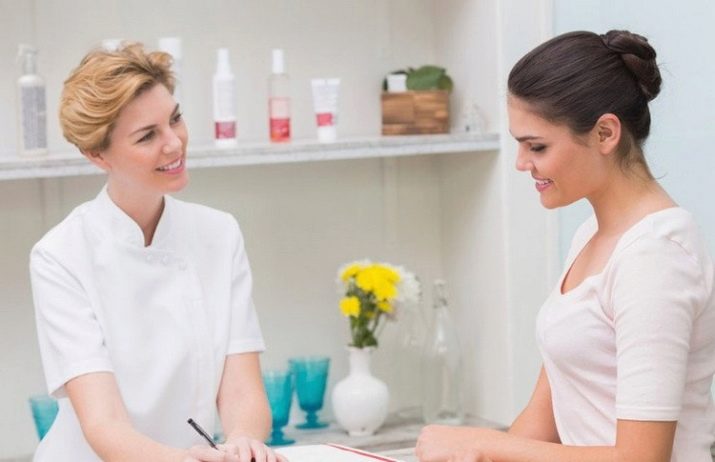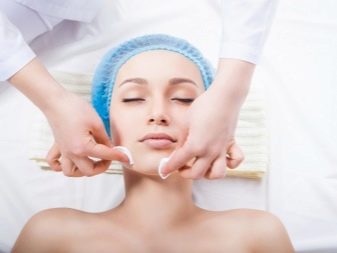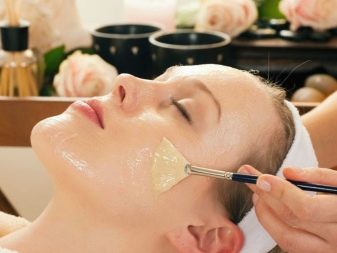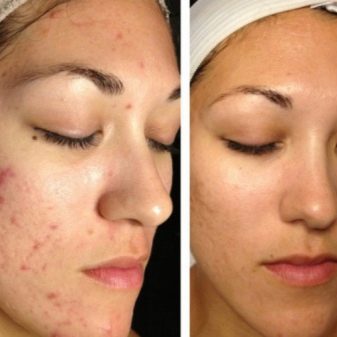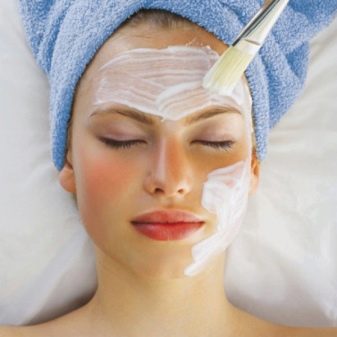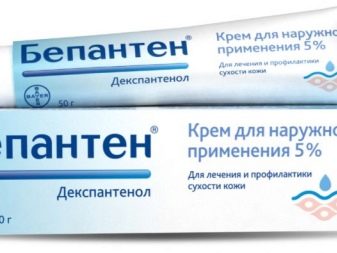Superficial peeling of the face: what is it and how is it performed?

In the price list of any cosmetology room you can find a huge number of different types of peeling. Some of them are very popular, others are less in demand. In any case, peels - a necessary part of a beauty ritual. It is better to begin acquaintance with surface peeling - procedures for gentle cleansing of the face.
Operating principle
Unlike midline and deep cleansing, surface peeling works only on the upper layers of the epidermis.
Cosmetic procedure has an effect in two ways. - active substances cleanse the skin and rejuvenate it (stimulate the natural production of elastin and collagen). As a result of peeling, cleansing, peeling of the cells occurs, fresh, soft and smooth skin penetrates to the surface. At the same time, the active ingredients of the procedure do not penetrate further than the basement membrane and do not touch the dermis.
For best results, peeling courses are recommended. The number of procedures is assigned in each case individually. On average, for the treatment of skin with advanced forms of acne do 10 procedures, with the aim of rejuvenation less - 5. The course is held twice a year, during the period of the least solar activity.
Based on the analysis of the principle of action of surface peeling, several important advantages can be identified.
- Soft, gentle effect on the skin. It affects only the epidermis, without damaging the basal layer and not penetrating into the dermis.
- The possibility of frequent regular procedures due to the soft action.
- All-season character of peeling. This allows you to clean the skin in any season, even with increased solar activity, without forgetting to use products with SPF.
- The alternation of various types of surface peeling. This will bring more noticeable results, improve healthier and rejuvenating effect. The advantage is that the active substances will not disturb the metabolic processes, will not lead to regenerative dysfunction.
- Low cost of the procedure. The price depends on the fame of the salon, beauty parlor, experience and professionalism of the specialist.
- Ability to perform the procedure at home. In the shops you can find the means that are allowed to use at home on their own. They are distinguished by a gentle composition, but with regular use are effective.
- The speed of the procedure. Peeling is carried out for a maximum of 50 minutes.
- Fast recovery - after about 3 days the skin will become soft and refreshed.
There are practically no flaws in the surface peeling of the face. The only disadvantages are the presence of contraindications and the need for thorough skin care during the rehabilitation period after the sessions.
Kinds
Surface peeling is a general concept that includes several types of this procedure. Beauticians distinguish three main types.
Mechanical
They say that mechanical cleaning is the most effective, but painful. It can make scrubs using a special brush. The principle of the mechanics is the effect on the skin with an abrasive agent that removes dead cells.
Hardware
With vacuum peeling, the beauty machine creates a vacuum effect and, through special nozzles, draws out the deepest impurities without damaging the skin.
Brush peeling is carried out with brushes and sponges, which are driven by a nozzle. The brush makes the skin loose, due to which it is cleaned of dirt, dead cells, polished, it becomes smoother and more uniform.
Ultrasonic devices are painless. Ultrasound activates the metabolism at the cellular level and starts the process of producing protein for skin renewal.
Laser peeling is a painful, but effective procedure. The strength of the laser beam destroys several layers of the epidermis, after which the skin becomes well-groomed, clean, smooth.
Chemical
The basis of this peeling is the work of fruit acids and enzymatic compounds. Based on this, several subspecies of peeling are distinguished.
The first is enzyme. Enzymes are enzymes that accelerate various processes in the human body. Enzymes can be plant, animal and bacterial. They gently affect the skin, cleanse from dirt, dead cells. Suitable for all skin types, including sensitive.
The second is acidic. The composition of the funds include acids. They are used depending on the source data of the patient.
Acids perfectly cope with the first signs of aging, shallow wrinkles, pigment spots.
- Lactic acid is hypoallergenic, it gives a healthy color to the skin of the face, makes it elastic, suitable for women from 18 years.
- The active ingredient in almond peeling is bitter almond extract. Removes acne, acne effects, evens tone.
- Glycolic acid works in such a way that it opens the access of active substances to the deeper layers of the skin.
- Salicylic peeling is used for the active stage of acne, inflammation, rashes.
- Retinoic acid is indicated for women from the age of 35, when the skin loses its elasticity and deep wrinkles appear.
- When skin conditions are neglected, seborrheic dermatitis, acne in the acute phase, acne, other severe inflammatory processes, Jessner and TCA peeling are performed. They have a bactericidal effect, whiten the skin, restore it.
Acid peels are the most popular, their results are noticeable immediately, the effect is long-lasting.
The third is a combined one. For best results, enzymes and acids are combined in one procedure.
Each type of peeling has its effect and effect, therefore, it is necessary to consult a doctor for the proper selection of the procedure.
Indications and contraindications
As with any procedure, peeling has its limitations in carrying out.
Beauticians refer to the following contraindications:
- pregnancy and lactation period;
- diseases - malignant tumors, cardiovascular diseases, dermatological problems in the acute stage, such as herpes, demodicosis, acne, various viruses and infections;
- damage to the skin - it can be wounds, scratches, neoplasms - warts, atheroma, papillomas;
- allergic reactions to the components of the peeling.
Each contraindication is discussed at a consultation with a doctor, if necessary, tests and examinations of other specialists are appointed.
Superficial peeling is shown at the first signs of aging - the appearance of mimic and age wrinkles. Peeling is recommended when there is pigmentation on the face, acne, acne, rash. Uneven tone of the face, scars and scars are also indications for the procedure.
Regular and timely peeling will quickly get rid of these problems.
However, cosmetologists warn that certain risks are possible:
- during the exacerbation of the rash, peeling will lead to a deterioration of the epidermis;
- carrying out the procedure in the season of solar activity and non-use of funds with SPF-filters will cause pigmentation;
- at home, you can not strongly rub the particles of the product into the skin, otherwise the result will be irritation;
- when using a new composition, it is necessary to test for allergies (apply a product on the wrist, rub a little and wait 15 minutes).
Stages of the procedure
To effectively solve problems with the skin of the face, you need to find a competent specialist - a professional cosmetologist with experience in aesthetic medicine. It is worth paying attention to a few points - the level of the salon, clinic, fame of the doctor, his education, you can be asked to get acquainted with licenses, diplomas of training, certificates of training. Typically, patients are guided by reviews of friends and information posted on the Internet. The outcome of the procedure directly depends on the choice of a cosmetologist.
The specialist has been chosen; now he must conduct a detailed consultation. During the conversation with the client, it turns out what defects bother him, what he wants to get after the peeling. Also, the doctor will ask if there are any contraindications and, if necessary, prescribe additional examinations, tests, consultations of other doctors.
The next step is peeling. The procedure consists of several stages.
- Preparatory. It consists in one main principle - the presence of clean skin. The face is cleared of makeup and other impurities. To do this, use a soft gel or foam. After the surface is degreased with a special tonic and a preparative gel with a low content of acids is applied, which will help to level the epidermis, will prepare the skin for uniform penetration of the solution.
- Main. The composition with active substances is applied to the skin. There are two ways of applying. At the first, sparing option, means is put with a brush by the fast, easy movements. This method is suitable for a person with small defects. The second method is aggressive, the application takes place with the help of a tampon with pressing movements. The tool remains for a period of time from 30 to 50 minutes depending on the goals pursued and the state of the epidermis. For other types of peeling, appropriate manipulations are performed.
- Neutralizing. A gel is applied that stops the action of the active substances. The preparations from the face are removed with clean water.
- Final. The skin is soothed and it is necessary to moisturize and nourish the mask and cream.
According to most patients, the procedure of superficial peeling makes the skin smooth, removes wrinkles and acne marks, eliminates pigment spots.
Aftercare
The main feature of the rehabilitation period after peeling is peeling of the skin, its dryness. Therefore, it is important to support the face, in terms of moisture and to refrain from traumatic effects.
Beauticians advise to adhere to some rules of care.
- Follow the recommendations of the doctor.
- For a week, abandon decorative cosmetics, aggressive scrubbing agents. Use medications - "Panthenol" and "Bepanten."
- Stop visiting the solarium and the beach.
- Do not tear off the formed crusts.
- Wash off with moisturizers and make moisturizing masks.
How to make a superficial facial peeling, see the following video.

